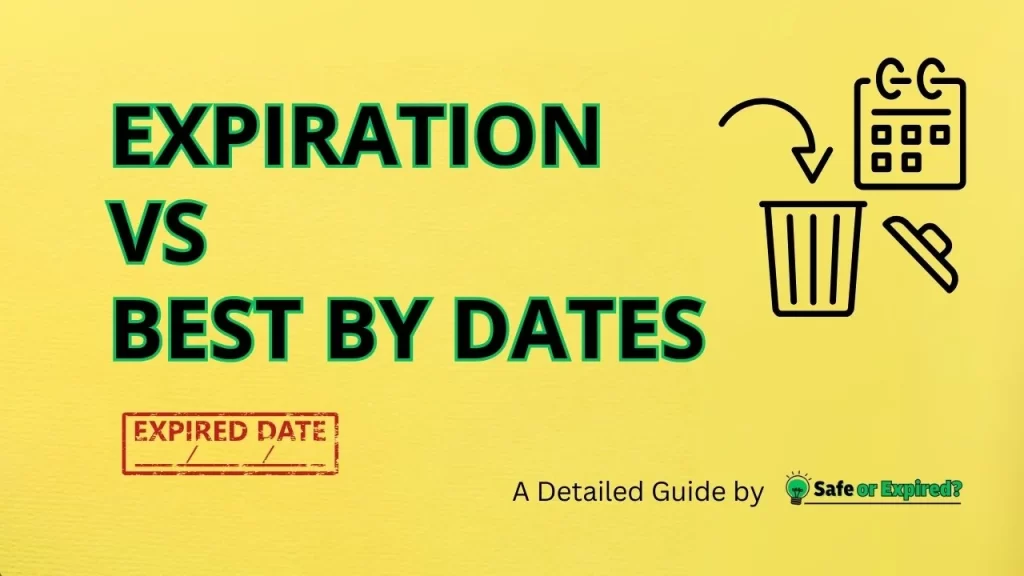“Expiration vs Best By Dates” are words we see on our food, but what do they really mean? This guide helps you understand these dates so you can make smart choices about your food. You’ll learn when it’s okay to eat your food and when it might be time to throw it away.
Let’s start this easy guide to keep your food safe and cut down on waste.
Understanding Expiration Dates: What They Really Mean?
Expiration dates are those little numbers printed on food packages that tell you the last day a food is expected to be safe to eat. It’s different from a “best by” date, which is all about when food tastes its best, not safety.
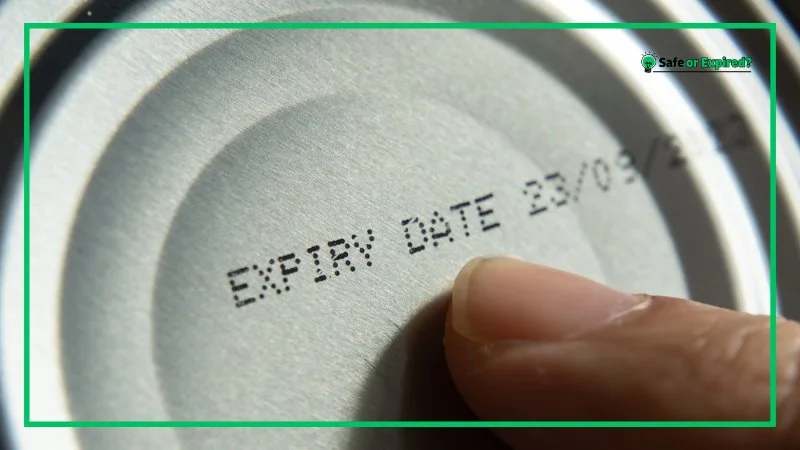
Think of expiration dates as a safety net for your food. Eating food past this date might not always make you sick, but it’s like rolling the dice with your health. Foods like meats, dairy, and fresh fruits go through strict tests to find out when they might start to go bad. This helps companies decide the safest time to enjoy them.
How Do They Figure Them Out?
Food experts do lots of tests to pick these dates. They look at how fast bacteria grow, how the food changes color, and even how it smells over time. This science helps make sure the food you eat is not just delicious but also safe.
What If Food Is Just a Bit Expired?
Here’s the deal: sometimes, food can be okay a day or two after the expiration date, but it’s a bit risky. If the milk smells fine, you might think it’s okay, but it’s better to be safe.
Decoding Best By Dates: A Guide for Consumers
“Best By” dates are the manufacturer’s best estimate of when their product will no longer be in its prime condition. Think of it as the peak before the slow descent into less-than-perfect territory. It’s about flavor, texture, and perhaps color—not safety.

Now, the details.
Understanding the Implications
So, what happens when your box of cereal or bag of coffee beans hits its “Best By” date? The short answer: not much. Your cereal will still be crunchy, and your coffee will still wake you up in the morning. The change, if noticeable, might be in the subtlety of taste or crispness, not a transformation into something harmful.
The Sensory Check: Your Best Tool
According to the book Food and Beverage Stability and Shelf Life, your senses are incredibly reliable tools for determining the actual condition of your food. ResearchGate article highlights that if your snacks taste fine and shows no signs of spoilage (like odd smell or color), they’re generally good to go.
This sensory check is particularly useful for products with “Best By” dates, as these items rarely become unsafe immediately after the date has passed but might gradually lose their peak flavor or texture.
Best By Dates and Non-Perishables
Non-perishable items are where “Best By” dates really come into play. Dry goods, canned foods, and freezer items often carry these dates, and they’re usually safe to consume long after the date has passed. For example, dried pasta might lose a bit of its perfect texture over time, but it will remain safe and reasonably tasty well beyond its “Best By” date.
Expiration vs Best By Dates: The Differences
Expiration dates indicate when a product may no longer be safe to consume, focusing on food safety. “Best by” dates refer to quality, suggesting when a product is at its peak freshness and flavor, but it might still be safe to consume after this date if stored properly.
Expiration Dates: A Marker of Safety
Expiration dates, often labeled as “Use By” dates, are primarily concerned with food safety. They indicate the last day a product is expected to maintain its safety profile and be fit for consumption. After this date, the risk of foodborne illness can increase, especially for perishable items like meat.
In some cases, expiration dates are regulated by government agencies to ensure consumer safety. This is particularly true for highly perishable items or those with potential health risks if consumed past their prime.
When you encounter an expiration date, it’s generally advised to take it seriously, especially for products that are prone to bacterial growth. If a product is past its expiration date, consider it a signal to assess the food carefully or opt to discard it to avoid health risks.
Best By Dates: A Measure of Quality
“Best By” dates are indicators of when a product is expected to start declining in quality, not safety. This date suggests when the manufacturer believes the product will no longer be at its peak flavor, texture, or appearance. But it doesn’t necessarily mean the product is unsafe to consume.
Moreover, unlike expiration dates, Best By dates are not strictly regulated by government entities. They serve more as guidelines for retailers and consumers to gauge product freshness and optimal taste rather than hard-and-fast rules.
With Best-by dates, consumers have more flexibility to use their judgment. If a product has passed its Best-by date but still seems fine upon sensory evaluation (smell, taste, appearance), it’s likely still acceptable to consume. Moreover, you can also consume such foods without worries if you follow food safety guidelines. This includes:
- Storing correctly
- Keeping food clean
- Cooking well.
Key Takeaways for Consumers
- Understanding and Sensory Checks: Knowing the difference between “Best By” and expiration dates can help you decide when food is still good to eat. If a food is past its “Best By” date, you can use your senses—smelling, looking, and sometimes tasting—to check if it’s still okay.
- Reducing Waste: Recognizing what these dates mean can cut down on food waste. Food gets thrown out because people are confused about the dates, which wastes money and harms the environment.
- Safety and Quality Balance: It’s important to balance being safe with not wasting food. Understanding the labels helps you make smart choices, ensuring you enjoy your food at its best and avoid throwing away food that’s still fine to eat.
Navigating Expiration and Best By Dates for Different Food Types
For perishable foods like dairy and meat, adhere closely to expiration dates for safety. Non-perishables like canned goods and dry pasta, labeled with “Best By” dates, often remain safe past this point but may lose quality. Use sensory checks to gauge their condition and reduce unnecessary waste.
Fresh Produce: Trust Your Senses
When it comes to fruits and vegetables, most won’t carry a “Best By” or “Expiration” date, leaving the judgment call to you. The key here is to trust your senses. Look for vibrant colors, firm textures, and a fresh smell. Check this image:
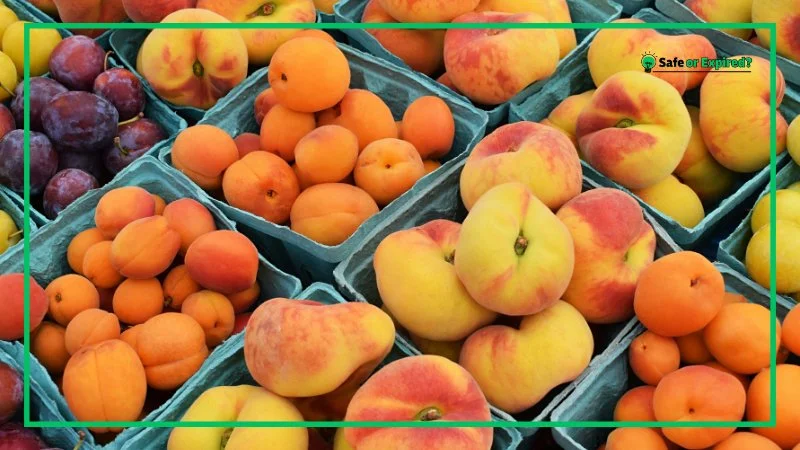
Note: A slightly wilted lettuce or a soft apple doesn’t necessarily mean it’s unsafe to eat, but it might not offer the best culinary experience.
Dairy Products: Understanding the Dates
Dairy products typically come with a “Sell By” or “Use By” date, which can be a bit more rigid due to their perishable nature. Milk, for example, can usually last a few days beyond its date if stored properly at or below 40°F. Yogurt and cheese have a bit more leeway, often remaining safe and tasty well past their labeled dates.
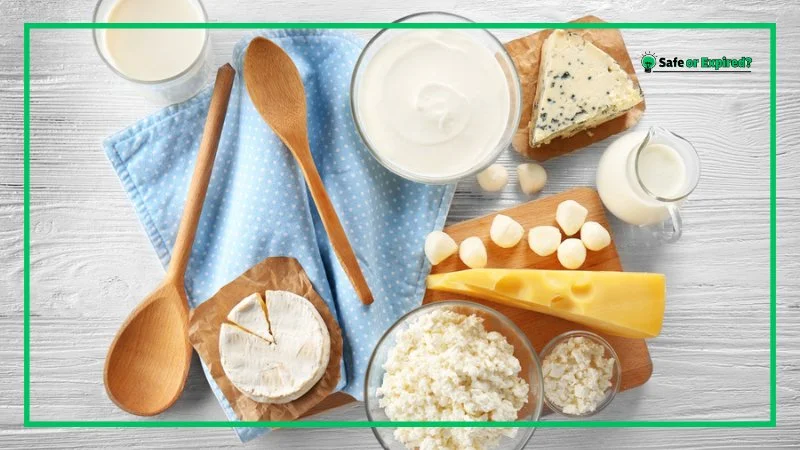
Research Insight: A study from the Journal of Food Science suggests that milk’s shelf life could extend past the printed date when kept at consistent refrigeration, highlighting the importance of storage conditions.
Pantry Staples: A Longevity Haven
Pantry staples like rice, pasta, and canned goods are champions of shelf life. Their “Best By” dates serve more as a quality guideline rather than a safety cutoff. Dry pasta can remain perfectly edible and maintain its taste for years beyond its date.
Canned goods, when undamaged and stored in a cool, dry place, can last even longer. The key factor here is the integrity of the packaging – any signs of damage or bulging cans are red flags.

Fact Check: The USDA confirms that low-acid canned goods (like vegetables and meats) can be good for 2 to 5 years and high-acid canned goods (like tomatoes and fruits) for 1 to 1.5 years if stored properly.
Meat and Poultry: Proceed with Caution
With meat and poultry, expiration dates should be adhered to more strictly. These products are susceptible to bacteria growth, which can pose serious health risks. Therefore, always check the expiration date and the meat’s texture before purchasing.
Here’s what a good-quality meat looks like:
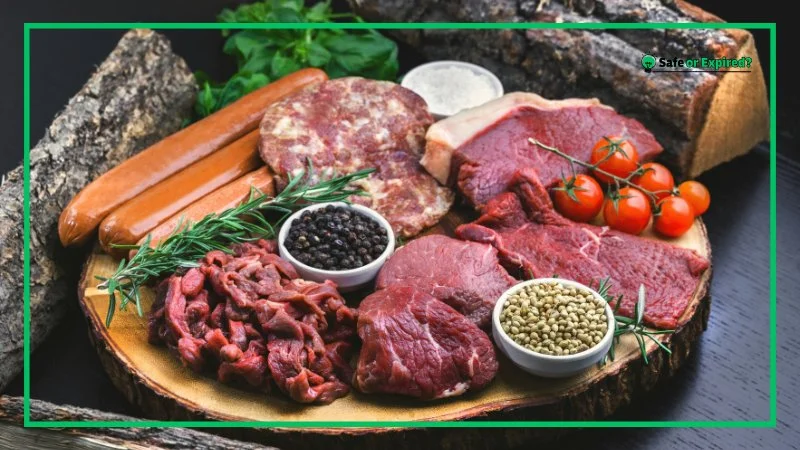
Safety Tip: If you’ve purchased meat or poultry that’s nearing its expiration date, freezing it is a great way to pause its aging process. Putting the meat under sunlight or exposing it to air can spoil it more quickly.
Eggs: A Surprising Resilience
Eggs are fascinating in their longevity. While they come with a “Sell By” or “Best By” date, they can often be consumed safely for 3-5 weeks beyond that date if refrigerated properly.

The water glass test—placing an egg in a bowl of water to see if it sinks or floats—can help determine its freshness, with fresher eggs sinking to the bottom.
Navigating Dates: A Consumer’s Guide
Understanding expiration and best-by-dates across these food categories emphasizes the balance between food safety and quality, minimizing waste. It showcases that while dates are helpful guidelines, the ultimate judgment often lies in our hands (and senses).
The Takeaway: By staying informed and using a bit of common sense, we can navigate the dates on our food with confidence. This not only ensures we’re enjoying our food at its best but also contributes to reducing unnecessary waste—a win for our palates, wallets, and the planet.
Table: Quick Guide to Expiry vs Best By Dates
| Aspect | Expiry Date | Best By Date |
| Focus | Safety | Quality |
| Meaning | Last day safe to consume | Starts losing quality |
| Regulation | Strictly regulated | Less regulated |
| On | Perishable items | Most packaged foods |
| Guidance | Don’t eat after this date | Best before this date |
Legal Regulations Surrounding Expiration and Best By Dates
Legal regulations on expiration and “Best By” dates vary by country. In the U.S., except for baby formula, these dates are not federally regulated and are set by manufacturers. They are intended to indicate quality and safety, helping consumers make informed choices, but are not legal requirements for food safety.
The Basics: No Federal Oversight, Except for Baby Formula
In the United States, there’s a surprising fact that often catches people off guard: there is no federal mandate that requires expiration dates on most food products. The notable exception is infant formula.
The Food and Drug Administration (FDA) oversees the safety of food products but does not dictate that foods must have “Best By,” “Sell By,” or “Use By” dates. The only product that is federally required to carry such a date is infant formula, as these dates ensure the nutrient content matches what’s on the label, which is crucial for infant development.
State-by-State Variance: A Patchwork of Policies
While the federal government may not mandate expiration dates on most foods, states can set their own rules. This creates a patchwork of regulations across the country. Some states, like California and New York, have specific guidelines about labeling perishable foods, while others may have more lenient standards or none at all.
For example, certain states require dating on dairy products, but the length of time for which the product is deemed safe or peak can vary dramatically.
The Role of “Sell By” Dates: For Retailers, Not Consumers
A common misconception among consumers is the purpose of “Sell By” dates. These dates are intended for retailers as a guide to managing their inventory.
However, these products are often still safe and satisfactory for consumption well beyond this date, highlighting the need for consumer education on interpreting these labels.
Industry Standards and Practices
Beyond legal requirements, food manufacturers and retailers often adhere to industry standards or establish their own practices for date labeling. This is done to ensure product consistency, maintain brand reputation, and guide consumers on when products are best used.
However, without a standardized system, this can lead to confusion, with various terms like “Best if Used By” or “Freeze By” signaling different meanings that might not be immediately clear to all shoppers.
Efforts Toward Standardization and Clarity
Recognizing the confusion surrounding date labels, organizations such as the Grocery Manufacturers Association (GMA) and the Food Marketing Institute (FMI) have advocated for standardized, voluntary labeling practices.
They recommend using “Best if Used By” to indicate product quality and “Use By” for products that should be consumed by a certain date for safety reasons. These efforts aim to reduce consumer confusion and minimize food waste by providing clearer guidance on food freshness and safety.
The Global Perspective: Varied Regulations Abroad
Internationally, regulations can be even more varied. The European Union, for example, has specific regulations that require date labeling on perishable foods for safety, with standardized terms across member states. Other countries might have their own unique systems or requirements.
Can You Eat Expired Foods? Health Risks Explained
Eating expired foods, especially those meant to be consumed while fresh can pose several health risks, including food poisoning and the development of harmful bacteria such as Salmonella. These bacteria can lead to uncomfortable symptoms like nausea, vomiting, etc.
Specific Foods and Their Risks
- Dairy Products: Expired dairy, especially milk and soft cheeses, can harbor bacteria, leading to foodborne illnesses.
- Meat and Poultry: Consuming these after their expiration date can be particularly risky due to the potential for bacterial growth.
- Canned Goods: While these can last a long time, a compromised can (bulging, leaking, or rusted) can contain botulinum toxin, causing serious illness.
When Might It Be Okay?
Some non-perishable items and pantry foods can be safe beyond their “best by” dates if stored properly. Dry goods like pasta, rice, and certain canned foods can last beyond these dates without posing significant health risks. However, it’s essential to use your senses—smell, sight, and taste—to guide your decision. If something looks, smells, or tastes off, it’s better to err on the side of caution and discard it.
How to Tell If Food Is Safe to Eat After Its Best By Date
After a “Best By” date, check food for safety by using your senses: smell it, look for mold, and assess texture. If it appears, smells, and tastes normal, it’s likely safe. However, be cautious with high-risk items like meat and dairy, and when in doubt, it’s safer to discard them.
Use Your Senses
Smell: Our noses are incredibly adept at detecting odors. If something doesn’t smell right, it’s a strong indicator that the food may not be safe to eat.
Sight: Look for any unusual changes in color or texture, as well as mold growth. These visual cues are often the first sign that food is starting to spoil.
Taste: If you’ve passed the smell and sight test, a small taste test can be the final judge. However, this should be done cautiously and as a last resort.
Understand the Food Type
There are many differences between perishable and shelf-stable foods and the biggest one is shelf life.
Perishable Foods: Dairy, meat, and prepared meals have a shorter shelf life and are more susceptible to bacteria growth. Extra caution should be used with these items. Since perishable items are usually raw, you should be extra careful with their storage practices.
Shelf-Stable Foods: Dry goods like rice, pasta, and canned foods can often last well beyond their “Best By” dates if stored properly.
Check the Storage
Refrigeration: Properly refrigerated foods will last longer. Make sure your fridge is set to 40°F or below to slow down bacteria. If not, the food can get spoiled. In fact, improper refrigeration is one of the leading reasons behind food spoilage.
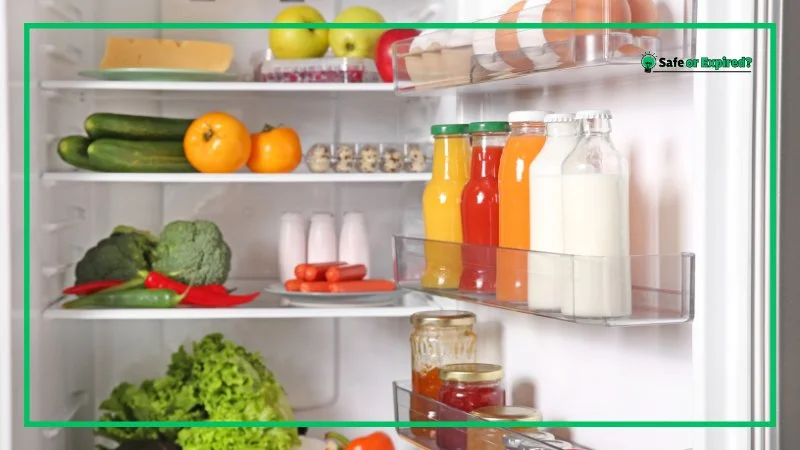
Pantry: Dry, cool, and dark conditions in the pantry can extend the life of many non-perishable items. Remember that they must be kept away from direct sun rays.

Consider the Packaging
Intact Packaging: Compromised packaging can lead to faster spoilage. Ensure cans aren’t bulging and packages aren’t torn.
Vacuum Seals: Vacuum-sealed foods often have a longer shelf life due to the reduced oxygen inside the packaging.
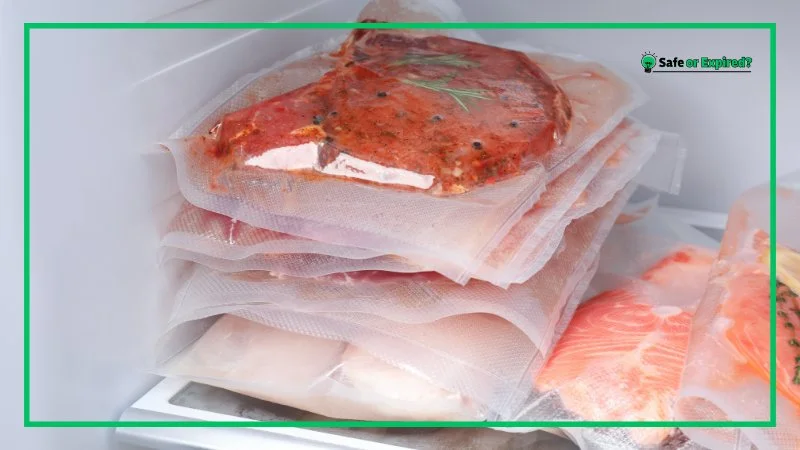
When in Doubt, Throw It Out
Despite all these checks, if you’re still uncertain about the safety of your food, it’s best to err on the side of caution. Foodborne illnesses can be serious, and it’s not worth taking the risk to save a meal.
Now, you can confidently assess whether your food is safe to consume after its “Best By” date, reducing waste while ensuring your meals are delicious and safe.
Conclusion
Navigating the waters of food expiration and best by dates doesn’t have to be confusing. With the right knowledge, you can make safer choices for your family while minimizing waste. Here are the key takeaways:
- “Best By” dates refer to food quality, not safety, whereas “Expiration” dates are more about food safety.
- Sensory checks (smell, sight, and taste) are crucial tools for assessing food safety past these dates.
- When in doubt, prioritize safety: if you’re unsure about a food item’s safety, it’s best to err on the side of caution and discard it.
- Educating yourself on these differences can lead to more sustainable food consumption practices, benefiting both your wallet and the environment.
With this guide, you’re now equipped to confidently handle food labels, ensuring you enjoy your meals safely and responsibly.

